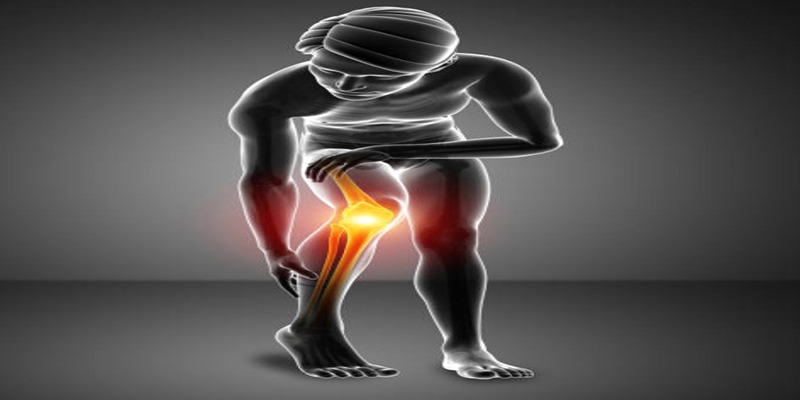Know all about tonsil stones, their formation, and symptoms to recognize them. Learn preventative measures.
Dec 21, 2023 By Nancy Miller
The human body has many systems and parts to keep us healthy. The tonsils are essential for the immune system. However, they can occasionally develop small, hardened deposits known as tonsil stones or tonsilloliths.
Introduction to Tonsil Stones
Tonsil stones, medically termed tonsilloliths, have puzzled medical professionals and patients. As a manifestation that arises within the mouth, these calcified formations are often discovered accidentally, sometimes during a routine dental check-up or when attempting to understand the cause behind persistent bad breath. The increasing commonality of tonsil stones emphasizes the importance of understanding their origin, the contributing factors, and the potential implications on oral and overall health.
What are Tonsil Stones?
These formations are calcified clusters within the crevices of the tonsils. They can be soft and mucus-like or hard and jagged. A tonsil stone may go unnoticed unless it causes symptoms like a sore throat or halitosis (bad breath).
While tonsil stones might seem like a modern discovery, historical medical texts have occasionally referenced conditions reminiscent of tonsilloliths. Today's prevalence could be linked to dietary changes, environmental factors, or a greater awareness and ability to diagnose the disease thanks to advanced medical equipment.
Anatomy of the Tonsils and Their Role
The human throat houses these small, fleshy lumps known as tonsils, which play a pivotal role in our body's defense mechanisms. However, their intricate structure makes them susceptible to the formation of tonsil stones.
Guardians of the Throat
Tonsils, part of the lymphatic system, defend against pathogens ingested or inhaled. Like lymph nodes, they filter bacteria and invaders before they enter the body. This protective function emphasizes the tonsils' significance in our immune system, particularly during our younger years when we're more susceptible to infections.
Tonsillar Crypts
The surface of the tonsils could be more uniformly smooth. Pits, folds, and crevices, known as tonsillar crypts, provide an area where debris, dead cells, and bacteria can accumulate. Over time, these trapped particles can solidify, leading to the formation of tonsil stones. For many, these crypts are naturally occurring, but they can become more pronounced with repeated tonsillitis or inflammation.
Formation and Underlying Causes of Tonsil Stones
Tonsil stones, while intriguing, are often a symptom of an underlying issue or a result of certain lifestyle habits. Delving the root causes can offer insights into effective tonsil stone removal and prevention.
The Trap of Dietary Residues
Foods that crumble easily or are fibrous can leave particles behind in the tonsillar crypts. Over time, these particles, if not flushed out naturally or through proper oral hygiene, can serve as a foundation for tonsil stones.
Bacterial Influence on Tonsil Stones Cause
Our mouths are home to diverse bacteria, most of which are harmless or even beneficial. However, some bacteria thrive in the oxygen-deprived environment of the tonsillar crypts and can expedite the calcification process, leading to tonsil stones.
Salivary Contributions
Saliva plays an integral role in oral health. Apart from aiding in digestion, it helps cleanse the mouth. However, the minerals in saliva, like calcium and phosphates, can contribute to the hardening of debris in the tonsils, ultimately leading to tonsil stone formation.
Chronic Throat Infections and Their Role
Frequent tonsillitis or throat infections can lead to the enlargement or increased prominence of tonsillar crypts. This makes it easier for debris to get trapped and increases the risk of tonsil stones.
Recognizing the Symptoms of Tonsil Stones

While frequently unnoticed due to size or location, tonsil stones can manifest in various symptoms. Recognizing these symptoms is paramount for early tonsil stone removal to minimize discomfort or potential complications.
Bad Breath
One of the primary indicators of tonsil stones is halitosis or chronic bad breath. The accumulation of food debris and bacteria leads to the release of sulfurous compounds. When released into the breath, these compounds can cause a persistent foul smell, often prompting individuals to investigate the tonsil stones cause.
Discomfort in Throat
Many individuals report a sensation of something being stuck in their throat or a consistent discomfort. This can be attributed to the presence of larger tonsil stones or due to inflammation caused by the rocks.
Visual Indicators
On a closer look inside the mouth, white or yellowish formations can often be seen on the tonsils. When visible, these formations are the tonsil stones and usually indicate the need for removal.
Referred Ear Pain
The neural pathways in the throat and ear are closely intertwined. As a result, the irritation caused by tonsil stones can occasionally be felt as ear pain, puzzling individuals about the actual tonsil stones cause.
Diagnosis and Clinical Approaches
Identifying tonsil stones ensures that they are differentiated from other throat conditions. With correct diagnosis, suitable treatment options can be recommended.
Clinical Examination
A healthcare provider might initially opt for a physical examination of the throat using a light source. This often suffices for spotting visible tonsil stones.
Imaging Techniques
For stones that are not immediately visible or are deeper within the tonsillar crypts, imaging methods, like X-rays or CT scans, can be utilized.
Dental Examinations
Sometimes, dentists spot tonsil stones during regular dental check-ups, significantly if they contribute to halitosis. This underscores the significance of routine dental visits for oral hygiene and tonsil stone removal recommendations.
Treatment Modalities and Management
Once diagnosed, tonsil stones can be managed using various methods. Treatment choice often depends on the size, symptoms, and individual preferences.
Home Remedies and Basic Care
Gargling with salt water can help alleviate the discomfort associated with tonsil stones. This practice can also dislodge smaller stones, addressing the tonsil stones' cause and aiding in removal.
Manual Removal
For those who are comfortable, using a sterilized cotton swab can assist in dislodging visible tonsil stones gently. However, caution should be exercised to avoid any injury.
Medical Interventions
In some cases, when tonsil stones are persistent, large, or recurrent, medical interventions might be recommended. These can range from prescribed medications to address underlying infections to surgical tonsil stone removal.
Tonsillectomy
As a last resort, if tonsil stones become recurrent and problematic, an ENT specialist might suggest a tonsillectomy, where the tonsils are surgically removed. This method ensures that tonsil stones do not recur.
Preventative Measures

Ensuring tonsil stones do not recur is critical. Strategies include:
Regular Oral Care
It includes brushing, flossing, and mouth rinsing, which reduces bacterial buildup.
Hydration
Drinking ample water aids in cleaning the oral cavity and prevents debris accumulation.
Diet Considerations
Eating a balanced diet and reducing the intake of sugary foods can deter bacterial growth and stone formation.
-
 Jan 24, 2024
Jan 24, 2024Everything You Need to Know About Anesthesia: A Detailed Exploration
Understand the intricacies of anesthesia with our comprehensive guide, covering its types, uses, how it works, and what to expect during recovery.
-
 Jul 09, 2024
Jul 09, 2024Natural vs. Refined Sugars: What You Need to Know
Discover the difference between natural and refined sugars, their health impacts, and practical tips for reducing refined sugar intake for a healthier lifestyle.
-
 Nov 19, 2023
Nov 19, 2023What is Achilles Tendinitis?
Explore the causes, signs, and treatments of Achilles tendinitis. Learn about prevention strategies to reduce your risk of this painful condition
-
 Oct 21, 2023
Oct 21, 2023Learn about what is trichotillomania, its causes, and its treatment all in one guide. Discover trichotillomania causes.
Everything You Need To Know About Trichotillomania
